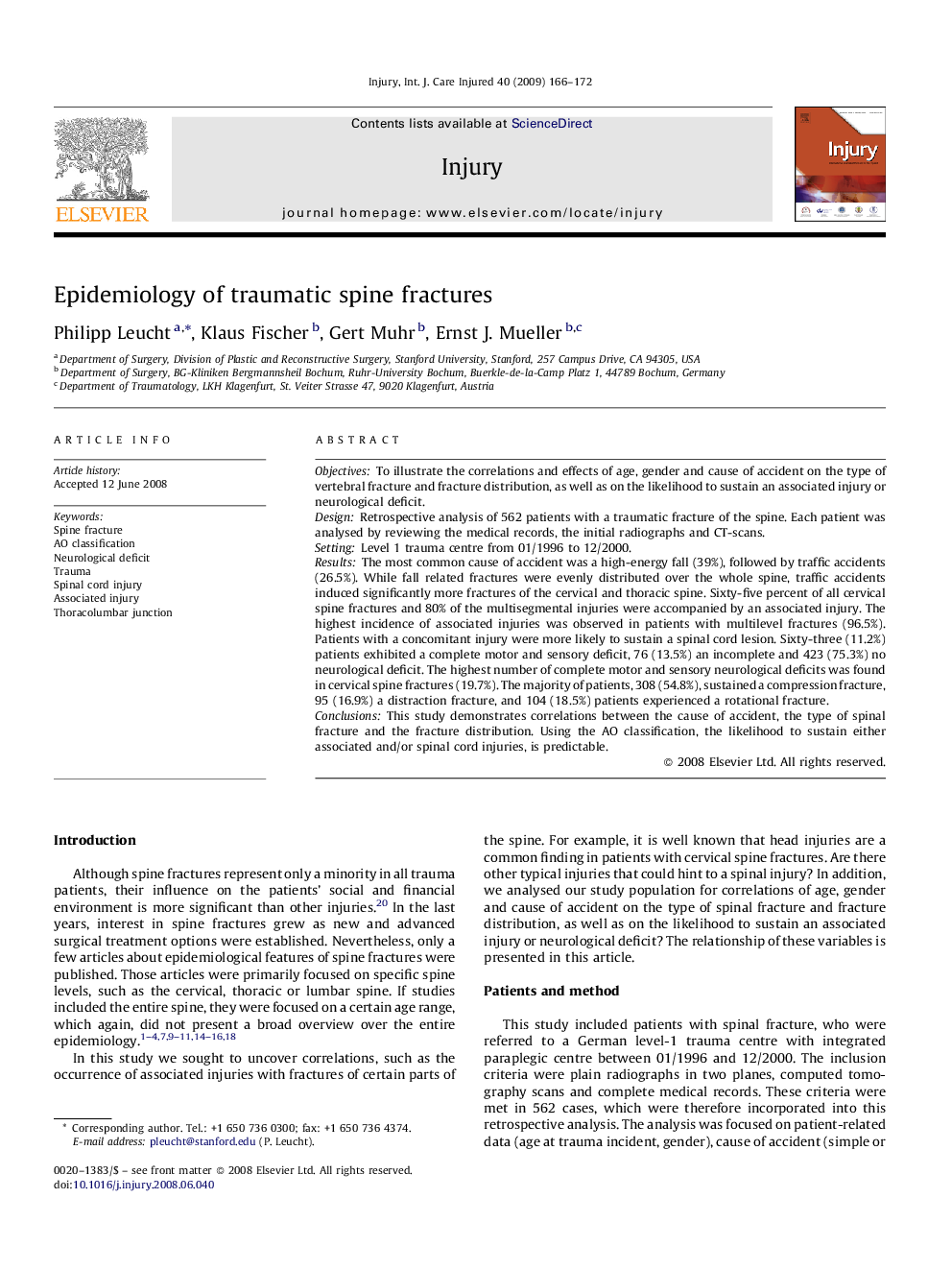| کد مقاله | کد نشریه | سال انتشار | مقاله انگلیسی | نسخه تمام متن |
|---|---|---|---|---|
| 3241521 | 1206080 | 2009 | 7 صفحه PDF | دانلود رایگان |

ObjectivesTo illustrate the correlations and effects of age, gender and cause of accident on the type of vertebral fracture and fracture distribution, as well as on the likelihood to sustain an associated injury or neurological deficit.DesignRetrospective analysis of 562 patients with a traumatic fracture of the spine. Each patient was analysed by reviewing the medical records, the initial radiographs and CT-scans.SettingLevel 1 trauma centre from 01/1996 to 12/2000.ResultsThe most common cause of accident was a high-energy fall (39%), followed by traffic accidents (26.5%). While fall related fractures were evenly distributed over the whole spine, traffic accidents induced significantly more fractures of the cervical and thoracic spine. Sixty-five percent of all cervical spine fractures and 80% of the multisegmental injuries were accompanied by an associated injury. The highest incidence of associated injuries was observed in patients with multilevel fractures (96.5%). Patients with a concomitant injury were more likely to sustain a spinal cord lesion. Sixty-three (11.2%) patients exhibited a complete motor and sensory deficit, 76 (13.5%) an incomplete and 423 (75.3%) no neurological deficit. The highest number of complete motor and sensory neurological deficits was found in cervical spine fractures (19.7%). The majority of patients, 308 (54.8%), sustained a compression fracture, 95 (16.9%) a distraction fracture, and 104 (18.5%) patients experienced a rotational fracture.ConclusionsThis study demonstrates correlations between the cause of accident, the type of spinal fracture and the fracture distribution. Using the AO classification, the likelihood to sustain either associated and/or spinal cord injuries, is predictable.
Journal: Injury - Volume 40, Issue 2, February 2009, Pages 166–172